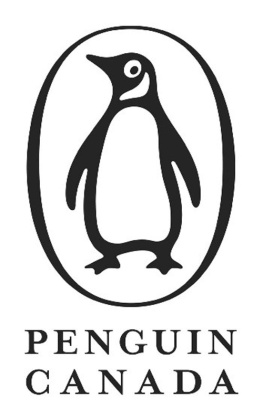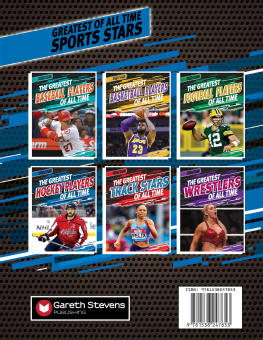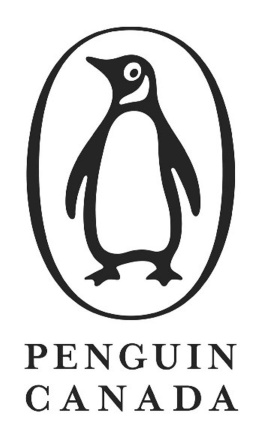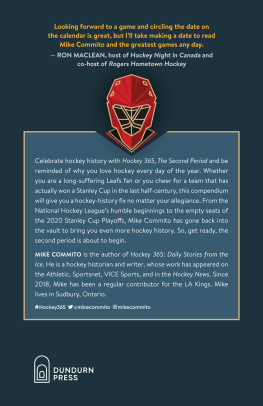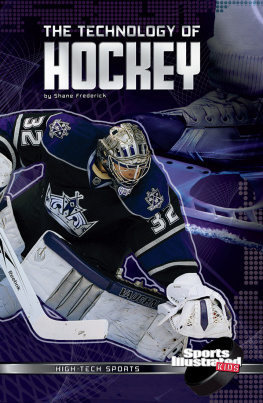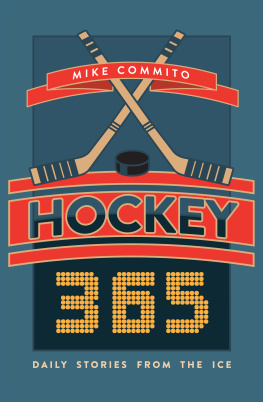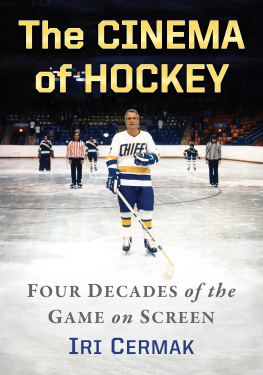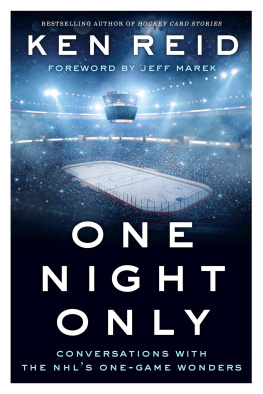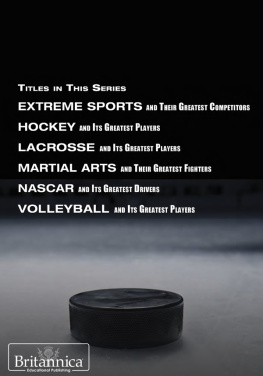SELLING THE DREAM
SELLING THE DREAM
HOW HOCKEY PARENTS AND THEIR KIDS ARE PAYING THE PRICE FOR OUR NATIONAL OBSESSION
KEN CAMPBELL WITH JIM PARCELS

VIKING
an imprint of Penguin Canada
Published by the Penguin Group
Penguin Group (Canada)
90 Eglinton Avenue East, Suite 700, Toronto, Ontario, Canada M4P 2Y3
Penguin Group (USA) Inc., 375 Hudson Street, New York, New York 10014, U.S.A.
Penguin Books Ltd, 80 Strand, London WC2R 0RL, England
Penguin Ireland, 25 St Stephens Green, Dublin 2, Ireland (a division of Penguin Books Ltd)
Penguin Group (Australia), 707 Collins Street, Melbourne, Victoria 3008, Australia
(a division of Pearson Australia Group Pty Ltd)
Penguin Books India Pvt Ltd, 11 Community Centre, Panchsheel Park, New Delhi 110 017, India
Penguin Group (NZ), 67 Apollo Drive, Rosedale, Auckland 0632, New Zealand
(a division of Pearson New Zealand Ltd)
Penguin Books (South Africa) (Pty) Ltd, 24 Sturdee Avenue, Rosebank, Johannesburg 2196, South Africa
Penguin Books Ltd, Registered Offices: 80 Strand, London WC2R 0RL, England
First published 2013
1 2 3 4 5 6 7 8 9 10 (RRD)
Copyright Ken Campbell and Jim Parcels, 2013
All rights reserved. Without limiting the rights under copyright reserved above, no part of this publication may be reproduced, stored in or introduced into a retrieval system, or transmitted in any form or by any means (electronic, mechanical, photocopying, recording or otherwise), without the prior written permission of both the copyright owner and the above publisher of this book.
Manufactured in the U.S.A.
LIBRARY AND ARCHIVES CANADA CATALOGUING IN PUBLICATION
Campbell, Ken, 1962
Selling the dream : how hockey parents and their kids are paying the price for our national obsession / Ken Campbell; with Jim Parcels.
ISBN 978-0-670-06573-8
1. HockeyEconomic aspectsCanada. I. Parcels, Jim II. Title.
GV847.4.C36 2013 796.9620691 C2012-906282-0
Visit the Penguin Canada website at www.penguin.ca
Special and corporate bulk purchase rates available; please see
www.penguin.ca/corporatesales or call 1-800-810-3104, ext. 2477.

TO MY SISTER DALE, WHO FOUGHT THE GOOD FIGHT RIGHT TO THE END
CONTENTS
INTRODUCTION
On the night of November 27, 2008, more than 6,000 fans jammed into the General Motors Centre in Oshawa, Ontario. Home of GMs headquarters since the companys predecessor, the McLaughlin Carriage Company, set up shop in 1876, Oshawa is a blue-collar town that loves its junior hockey with a passion and its tradition-steeped Generals even morebut not enough to fill the new rink to capacity on a Thursday night early in the Ontario Hockey League season for a game against the Peterborough Petes. In reality, most of those fans were there to witness the fifty-minute pre-game ceremony to honour a player who had left town more than forty years before, but who left an indelible imprint on the franchise.
Bobby Orr had finally agreed to have his No. 2 retired and raised to the rafters to join Eric Lindross No. 88 and Albert Red Tilsons No. 9. Dressed impeccably in a designer suit and looking youthful enough that he could probably still play, the sixty-year-old Orr appeared a little uncomfortable with all the attention, despite being one of the most revered and celebrated players in the history of hockey. Don Cherry made a grand entrance and called Orr the greatest player to ever play the game. Former Generals teammate Ian Young was on hand, as was Wren Blair, the Boston Bruins scout whod camped out on Orrs doorstep in Parry Sound in 1962 before getting him signed to a C Form with the Boston Bruins and started on the path to NHL stardom with the Generals, a junior team Blair was resurrecting using Orr as its centrepiece. Future NHL star John Tavares, another wunderkind who came to the Generals as a fourteen-year-old, presented Orr with a gold watch from Tiffany & Co. The choir from Bobby Orr Public School sang the national anthem.
As he took to the podium with his glasses resting on the bridge of his nose, Orr began reading from a prepared text. It wasnt long before his eyes began to well up, and his voice cracked slightly when he recalled the contribution his late parents, Doug and Arva, made to his career, telling the young players in attendance to always appreciate the sacrifices your family members have made so you can chase your dreams.
I know my, uh, mom and dad are watching tonight, he said. I know theyre very, very happy. Very proud. My mom and dad were perfect minor hockey parents. Their philosophy was, Look, go out and play, have fun and lets see what happens. And I wish there were more parents that thought like that when it came to their kids playing hockey.
Bobby Orr brought the house down with that one. Orr has long been a critic of minor hockey in Canada, and its emphasis on structure and systems and the perceived lack of focus on fundamental skills and fun. He laments that nobody plays the way he and Larry Robinson and Paul Coffey did because nobody allows them to do it anymore. He often hearkens back to his days of playing on the Seguin River at the mouth of Georgian Bay on frigid weekend afternoons. No coaches, no parents, just get the puck and go. With no boards to make high chips off the glass, you had to stickhandle your way out of trouble.
Three months after the ceremony, Orr was back at the General Motors Centre as a celebrity coach for the Canadian Hockey League Top Prospects Game, a gathering of the best draft-eligible seventeen- and eighteen-year-olds playing major junior hockey. With two surgically replaced knees, Orr was able to get around the ice better than he had in years and seemed to be loving every minute of the experience. After the workout, he spoke to the assembled members of the media and was asked whether the experience prompted him to look back to his younger days.
It was never a job for me. Even during my pro days, it was never a job, Orr said. Thats what these kids have to understand. Just enjoy it, keep that love and passion for the game. I think what sometimes we do the coaches and the parents, we just suck the love and passion from our kids. And I think thats wrong.
Not a person involved in the game today would disagree with that sentiment. And no doubt Bobby Orr meant every word of it. But Orrs world of minor hockey and childhood is a far cry from what were seeing a half-century later. What if Bobby Orr had grown up in Parry Sound circa 2012? Would his parents still be the perfect hockey parents? Is that even possible? Orr played his minor hockey in rural northern Ontario in the 1950s and early 60s, in an era when television was in its infancy and the hockey world was small and insular. In his final season of minor hockey Orr played for the Macklain Construction Bantams, who went undefeated and won the Ontario Minor Hockey Association (OMHA) Bantam B championship. It was at a tournament that season in Gananoque that the Bruins first noticed him. Until then, the kid who would soon be called the best player ever to put on a pair of skates was a relative unknown.
But if Bobby Orr were playing minor hockey today, the world would have known about him long before he became a teenager. Teams from the Greater Toronto Hockey League would have fallen over themselves in an effort to get him to migrate to the largest minor hockey association in the world and expose himself to better competition. Theres a good chance he would have been playing spring and summer hockey around the world and spending his summers working out on and off the ice. By age fifteen he would have been flooded with offers from junior teams and schools all over the United States, and he undoubtedly would have applied for exceptional player status to be eligible to play in the OHL.
Next page
